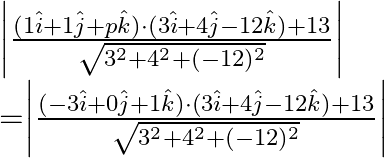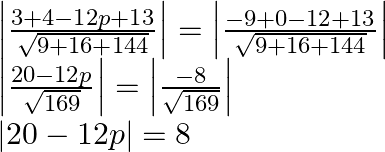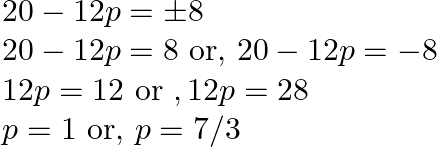Solution:
It is known to us that the distance of a point with position vector ![]() from the plane
from the plane ![]() is given as
is given as

Now, the position vector of point ![]() is given as
is given as
![]()
And, the position vector of point ![]() is given as
is given as
![]()
It is given that the points ![]() and
and ![]() are equidistant from the plane
are equidistant from the plane ![]()
Therefore,



As a result, the possible values of ![]() are 1 and
are 1 and ![]() .
.
